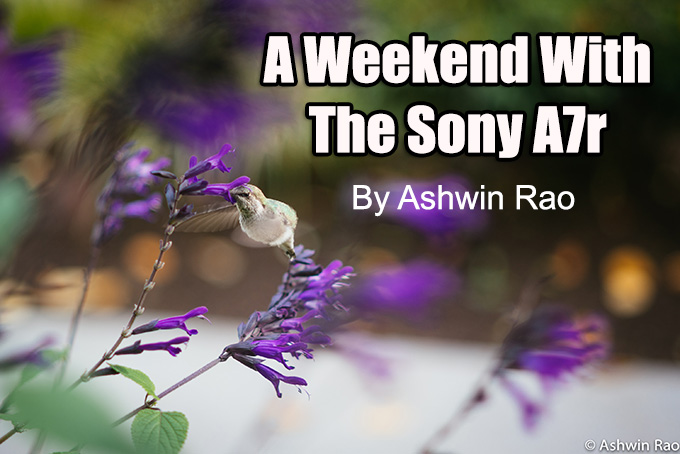
A weekend with the Sony A7R – A companion review
By Ashwin Rao – His Flickr is HERE
Hello, friends! I am back with a user report and second perspective to the review that Steve’s put together for the much-anticipated and ballyhooed Sony A7R, which I had the privilege of shooting over the past week-end, just ahead of its U.S. release. Interestingly, the U.S. appears to be the last major market to receive the A7R, and while many of you around the world have already begun to use the camera, it’s been rarely seen in these parts. All of that said, I was one of the lucky few to get a taste, and here’s my report.
The Sony A7R, as you know, is an incredibly compact mirrorless camera, housing an impressive 36-megapixel sensor, which forgoes an accompanying low-pass (Anti-Aliasing) filter. It’s a not so distant cousin to the 36 megapixel sensor found in the Nikon D800e, which was also produced by Sony for use with Nikon cameras.
Sony has been very ambitious with this camera from the get go. The A7 and A7R bring a new compactness to a body capable of holding a full frame sensor, something that previously only the Leica M9 and M240 were capable of providing. In fact, the A7R feels even more compact in hands, in heft, and in feel. It’s a robust feeling camera, feeling solid, and Sony credits it with at least partial weather sealing (when using Sony’s own FE lenses).
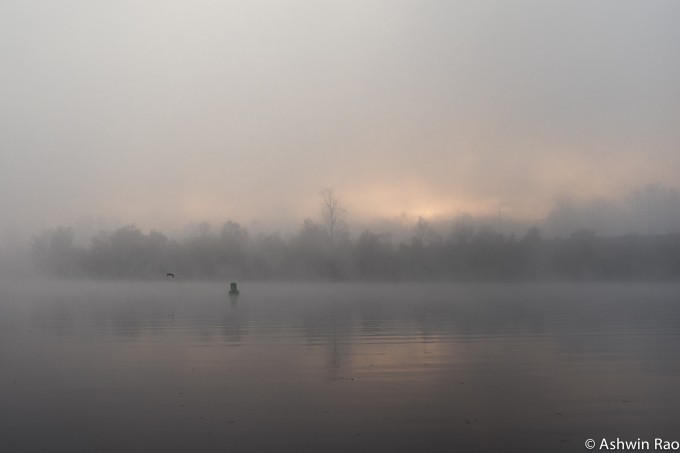
With all of this in mind, I have long had my antenna up looking for signs of another camera that might be adaptable to M lenses and produce solid results. I spent over a year with Fuji’s APS-C offerings, but ultimately the X-trans RAW conversion issues, and APS-C crop pushed me away. While I enjoyed by time with Sony’s NEX-7, the same APS-C crop factor and the sensor’s limitations in bringing the full charm of M lenses to the table pushed me away. I even considered picking up the lovely Olympus EM1, but the m4/3 crop has never been for me, despite all of the camera’s other advantages, which I hope trickle down to Sony someday, now that Olympus and Sony are partners in the camera making business.
Into the fray arrives the Sony A7R, a sensor delivering a whopping 36 megapixels of AA-less goodness, a true test for M lenses. My curiosity was so piqued that I ordered one from my local dealer a week BEFORE the camera was even announced. Having been thrilled with the output of the Sony RX1R, I vividly imagined the possibilities of an AA-less Sony sensor paired with my stable of M lenses. Would this be a modern sensor by which to play with my M lenses, a camera that I could take out into the night to make color pictures without worry of ISO limitations? Would it be worthy second camera to my now principal camera, the Leica M Monochrom?
Thankfully, one of my great friends Chris Y, a Leica friend of the highest regard, emailed me last week. He had received an A7R from an overseas distributor, and he wanted me to give the camera run with my stable of M lenses. I jumped at the chance, and was able to use the camera extensively, exclusively with M lenses using my Novoflex M-to-E mount adapter, for a 3 day period. Let me just say that the experience was both exhilarating and educational. Did I find the A7R to be the long lost solution for which I had been waiting? Was it a cheaper full frame camera capable of using M lenses of all sorts and producing high quality results? Was it a camera that I would enjoy, having to rely on an EVF with focus peaking and magnification to make images? I would soon find out.
For many folks who are planning an upgrade from an APS-C sensor camera to the A7R (i.e. you NEX users and Fuji folks), the upgrade is certainly worthwhile on several levels and difficult on a few other levels. APS-C sensors, with their cropped imaging plane, can hide many faults that would otherwise be an issue outside of the cropped field of few. Rangefinder lenses tend to have small exit pupils and provide short incident paths of light between the closest posterior lens element and senor. This and other factors, such as the chief ray angle of light bent by the lens, require a sensor, which is able to see light that’s been bent at a steep angle. If a sensor does not accommodate these matters with “offset microlenses” (i.e. hot topic word of the month), then one might expect to see quite a bit of light fall off at the periphery of the images. Further, these steep angles can also produce shifts in color reproduction at the edges of the full frame field of view, and one can see magenta casts and other color shifts that can pollute image quality. The Sony marketing team claims that the A7R includes offset microlenses to help address the issues described above, and the A7R was originally trumpeted as the camera to get for those of us interested in adapting our RF lenses to a full frame mirrorless solution. Did Sony work it’s magic again? Well…sort of….
First off, I will tell you that the shooting experience of the A7R with M lenses can certainly be pleasurable. If you are a SLR shooter, you will have to adjust to using lenses with manual focus, focus peaking, and magnified views to achieve critical focus. If you are a RF shooter, you’ll have to adjust from shooting manually using the RF parallax solution to focus peaking/magnification. I have used Sony NEX cameras, and so the experience was not unfamiliar to me. It took me about a day of heavy shooting to become accustomed to the A7R’s “way of seeing the scene”. Unlike the Rangefinder, with its fixed viewfinder and frame lines, in which one can see around the field of view and predict what may be entering or exiting the scene, the A7R offers a tunnel view that’s become common and comfortable for SLR devotees. Shifting from one version of shooting to the other can be disconcerting, even more so when using RF lenses, but after about a day, I was off to the races and enjoying the experiences.
As Steve has mentioned, focus peaking must be seen only as an aid to shooting. Unless you are shooting wide lenses or are shooting stopped down past f/4, you will likely need to use the camera’s magnified view to achieve critical focus. This can be disconcerting, as by “zooming in” while trying to grab focus, the photographer loses the framing and composition for a moment, before being able to zoom out and recompose as necessary. After a day of shooting, I felt more comfortable “zone focusing” using focus peaking, then rapidly magnifying to get critical focus before zooming back out to make the image. This method is not nearly as spontaneous as focusing using AF or rangefinder focusing, but it works and suffices to capture images that are less mobile. Shooting kids, pets, or birds, using this method is challenging, but less mobile scenes, including street scenes, are easily captured once you get used to the method of focusing. Keep this in mind when shooting the A7R.
As I continued to shoot with the camera, one concern began to dawn on me. The shutter of this camera is loud, and it’s not very well dampened. This is not necessarily a camera by which to shoot events that require quiet. For example, the shutter could be distracting at a wedding or quieter music venue. On the street, it’s not an issue, in terms of noise. The vibration generated by the shutter was of concern to me while I shot. While I have no scientific way of proving it, I was worried that the vibration generated by the shutter and translated to such a compact body could make for un-sharp images, particularly when coupled with a 36- megapixel camera. To compensate, I tended to shoot at the fastest possible shutter speeds, limiting myself to shutter speeds no slower than 1/200th of a second. This is actually not a major issue, as the Sony A7R’s ISO capacity is really solid. Despite it’s high pixel count, it’s an entirely adequate and solid low light performer, doing just fine through ISO3200, and sufficient through ISO 6400. Relying on higher shutter speeds in dim settings forces one to choose high ISO’s, and this isn’t as big an issue as I worried about.
Having moved past the focusing method and shutter sound/dampening matter, I really began to enjoy the camera on the streets and at parties in all different lighting settings. I found the EVF and tiltable LCD’s to both be fantastic. I really enjoy articulated LCD’s as they offer the photographer the ability to shoot at difficult angles without guessing. That being said, whenever possible I relied on the camera’s fantastic 2.3 mp EVF, which is awesome. While it’s not quite an optical viewfinder in terms of image clarity, it has very little shutter lag and allows the photographer to see a wealth of information (shutter, aperture, histogram) at his or her discretion. It’s really a lovely tool that Sony seems to be mastering. I found the EVF and LCD to be entirely adequate for focusing and composing.
On returning home, I downloaded Adobe Lightroom 5.3 (release candidate), which is capable of reading Sony A7R raw files, and I was greeted by a host of images of incredible detail many of which you see here. The first thing I noticed were the colors. Sony has done an incredible job to bring, vibrant, yet not over the top, life like colors to the fray. They seem to be true to the scene, and I was rapidly able to process them in a manner to look like files from my beloved CCD camera, the Leica M9 (with the added benefit of superior ISO performance, of course). To me, this was HUGE. Having a camera with a modern sensor, putting out files comparable to my M9, was what I have been looking for and craving for years now…..and here it was.
To boot, one of the less discussed “features” of the A7R is it’s top shutter speed of 1/8000 of a setting. For fast-lens geeks like me, having this feature is amazing, as it allows us to shoot wide open in daylight, while foregoing the use of an ND filter. Lenses like th Noctilux f/0.95 can suddenly be used in daylight circumstance…a world of creative possibilities thus opens up with ultrafast lenses on the A7R!
So was all well in the world?!? Well, in a word, NO! As I started to look around at images, I began to see a few issues with colorcast. Given the way the rangefinder lenses manipulate and bend light, I could easily see colorcasts and detail smearing at the edges of the images made with lenses wider than 28 mm. Once I pulled out my 28 mm Summicron, I was slightly more satisfied, as there was no substantial detail smearing, but the color casts, while less objectionable, remained. At times, the edges would take on a magenta hue. In other circumstances, a slightly bluish hue. The effect seemed to be far less noticeable for 35 mm lenses such as the 35 mm f/1.4 Summilux Asph Pre-FLE and FLE, but it is still there and noticeable if shooting shots of the sky or uniformly bright, backlit scenes, such as the “foggy morning” captures presented here. What surprised me is that I found this color shifting and vignetting to be present at times even with my 50 mm f/1.4 Summilux aspherical. It turns out that M lenses are really demanding on these full frame sensors, demanding enough that Leica once claimed it to be impossible to design a full frame digital rangefinder. Well, they eventually did find away, but it took a lot of cunning, know how, and a bunch of in-camera color cast correction applied to RAW files before they ever got onto Lightroom. Unfortunately, the Sony A7R does not have such software corrections. It’s offset microlenses do not suffice to correct these color casts, so if you decide to buy this camera and shoot your RF lenses, be prepared for some frustration and to adjust your post-processing techniques to accommodate for these matters. There are programs, such as SilkyPix, a RAW converter that allow one to create lens profiles and correct such color casts. There are workarounds in Lightroom 5.3, such as using the digital graduated ND filter creatively, that help reduce the effect of these color shifts. One other issues is chromatic aberration, which tends to show itself when lenses are pitted against demanding sensors. In fact, lense such as the Noctilux f/0.95, which have known CA issues, seem to even more prone to showing CA on the A7R. In summary if you are looking to seamlessly shoot your M lenses on the A7R, be prepared to pause.
If you are a black and white shooter, color casts and CA won’t matter, and then it gets down to correcting for some vignetting, which is more easily accomplished within a LR workflow. IF you only shoot telephoto lenses, then you are safe with the A7R, and I would argue that you will find yourself getting far more consistent results with lenses such as the 75 mm Summilux, as the focus peaking/zoomed focus method works really well to achieve critical results here. However, if you plan to use lenses wider than 35 mm, the results can occasionally be objectionable. For photographers like me, who prefer to work between 35 mm and 90 mm focal lengths, you’ll be plenty satisfied most of the time with files coming from the A7R. It’s not a panacea for the photographically inclined, but it’s worth the effort. That being said, Sony will hopefully partner successfully with Zeiss to offer a range of high quality AF lenses in its FE lineup. At this time, there are reports that they will release as many as 15 AF FE lenses in the 2 years following the A7R’s release, and we’ll see if this holds true. For many of us, simply having a 35 mm, 55 mm, and an 85 mm lens will suffice.
As I didn’t have these lenses on hand, I cannot comment on the A7R’s autofocus capabilities, but it seems that they will suffice for most types of shooting, save sporting events.
All in all, I found my time with the Sony A7R to be pleasurable. Was I won over? In the end, I’d answer a cautious “yes.” It produces wonderful files that are full of detail when properly exposed and captured, and in most circumstances, will give you results with which you can be proud. Just be prepared to adjust a bit in your workflow.
Thanks for taking the time to read. As you might imagine, all images presented here were taken with the A7R and a host of M and LTM lenses including the:
Leica 35 mm f/2.5 Summarit
Leica 35 mm f/1.4 Summilux Asph and FLE
Leica 50 mm f/1.4 Summilux Asph
Leica 75 mm f/1.4 Summilux
Leica 90 mm f/2 APO Summicron Asph
Canon 85 mm f/1.8 LTM
Canon 100 mm f/2 LTN
W-Nikkor 35 mm f/1.8 LTM
Nikkor S.C. 50 mm f/1.4 LTM
Nikkor H.C. 85 mm f/2 LTM
Canon 50 mm f/1.5 LTM
Zeiss ZM 50 mm f/1.5 C-Sonnar
All the best, and enjoy life behind the shutter.
Ashwin

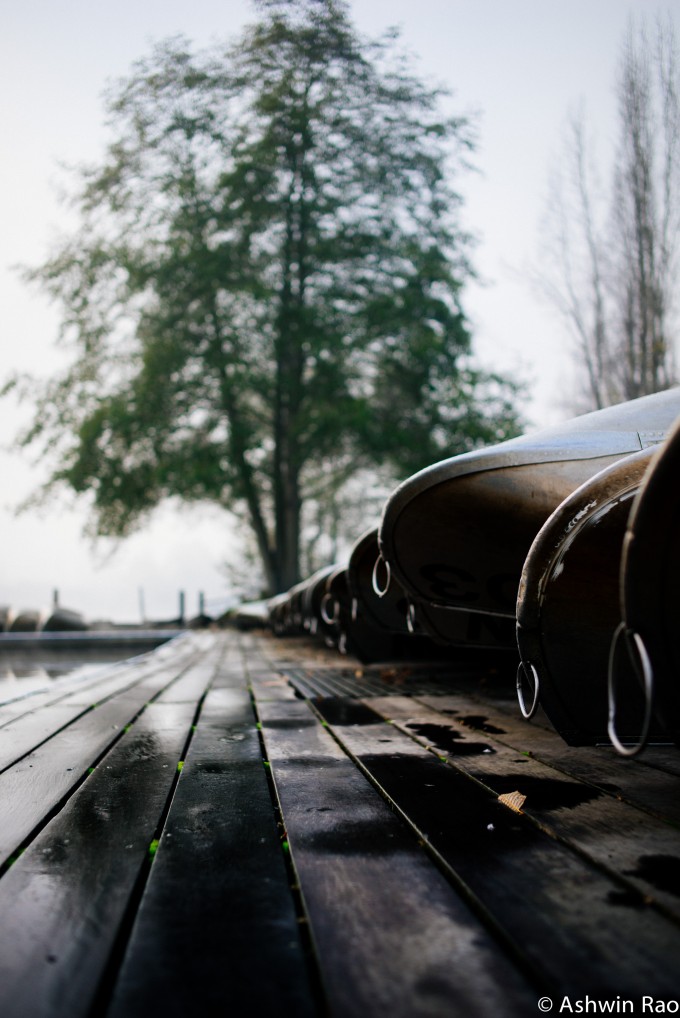
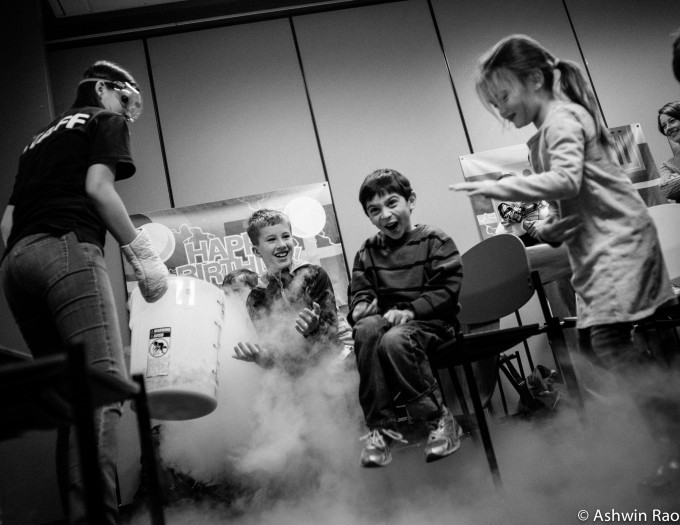
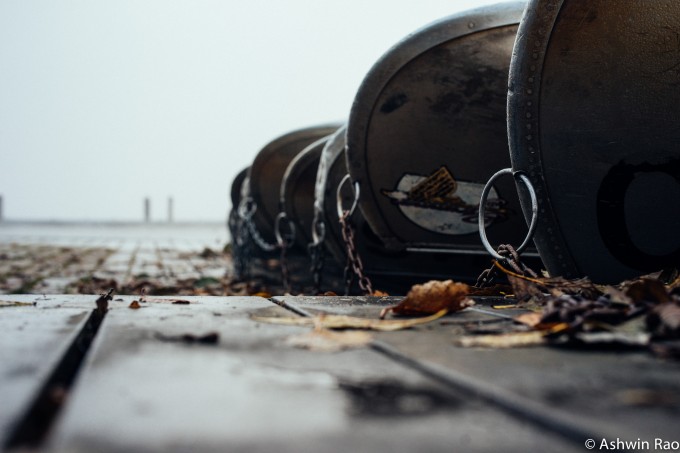
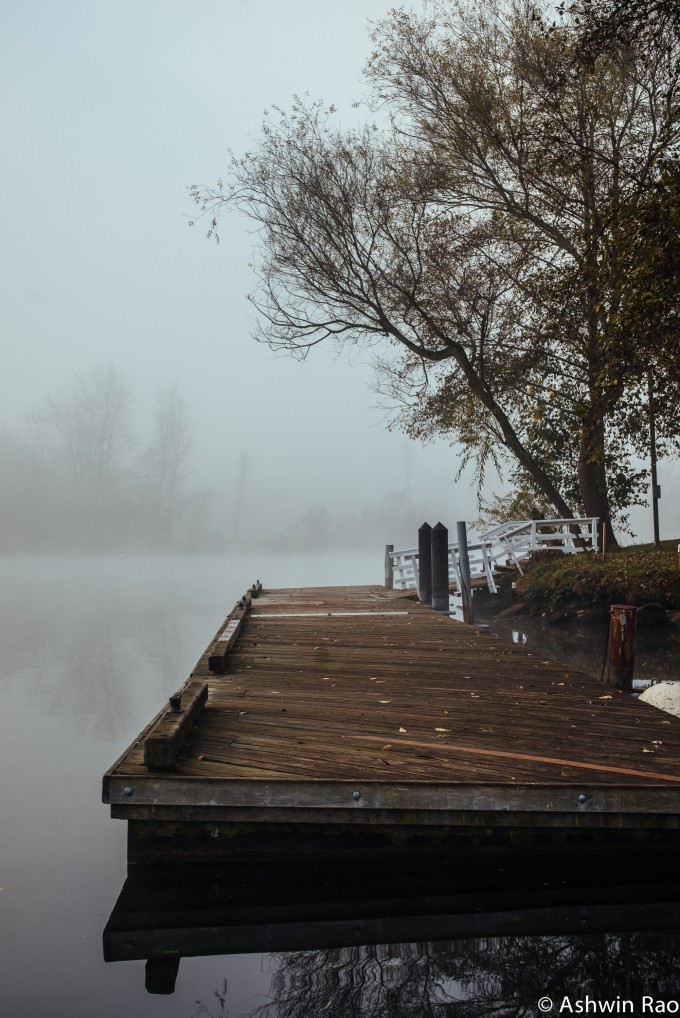
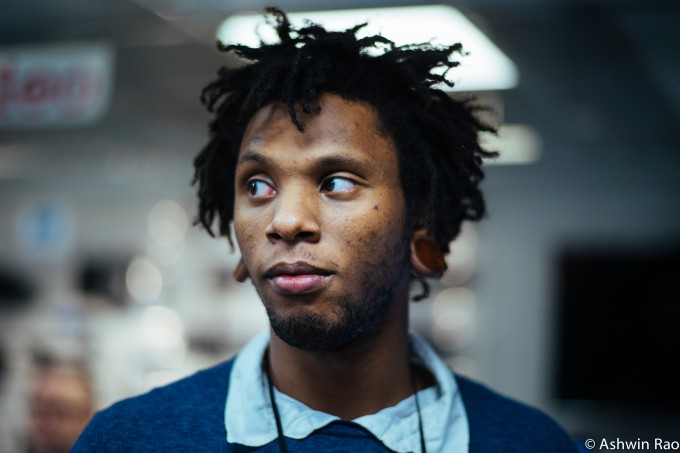
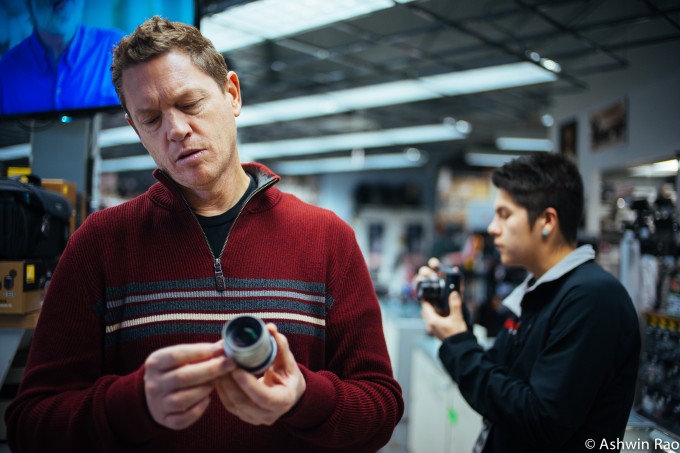
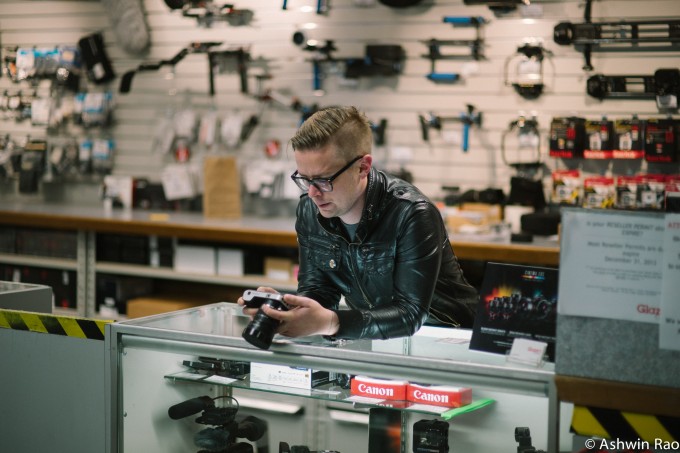
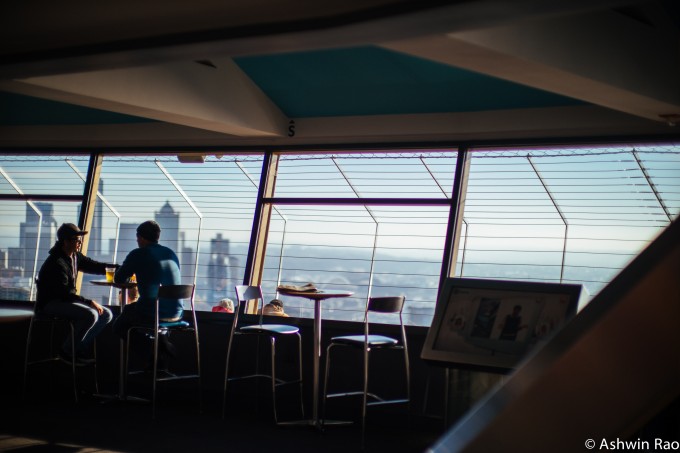
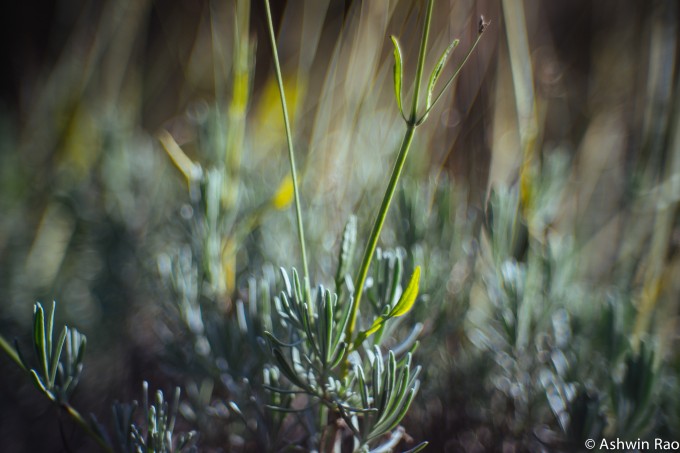
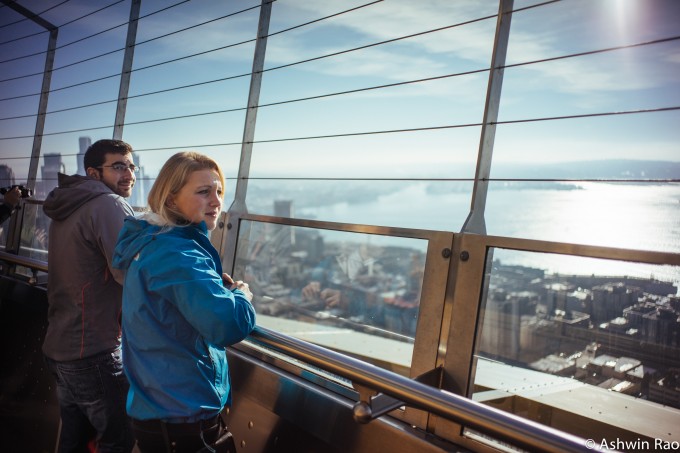

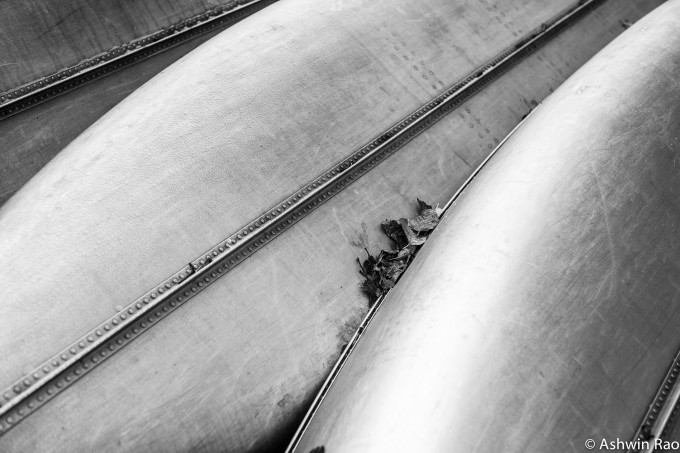
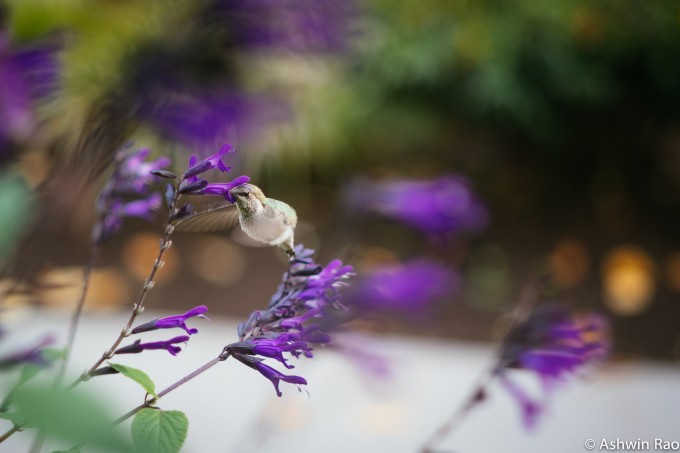
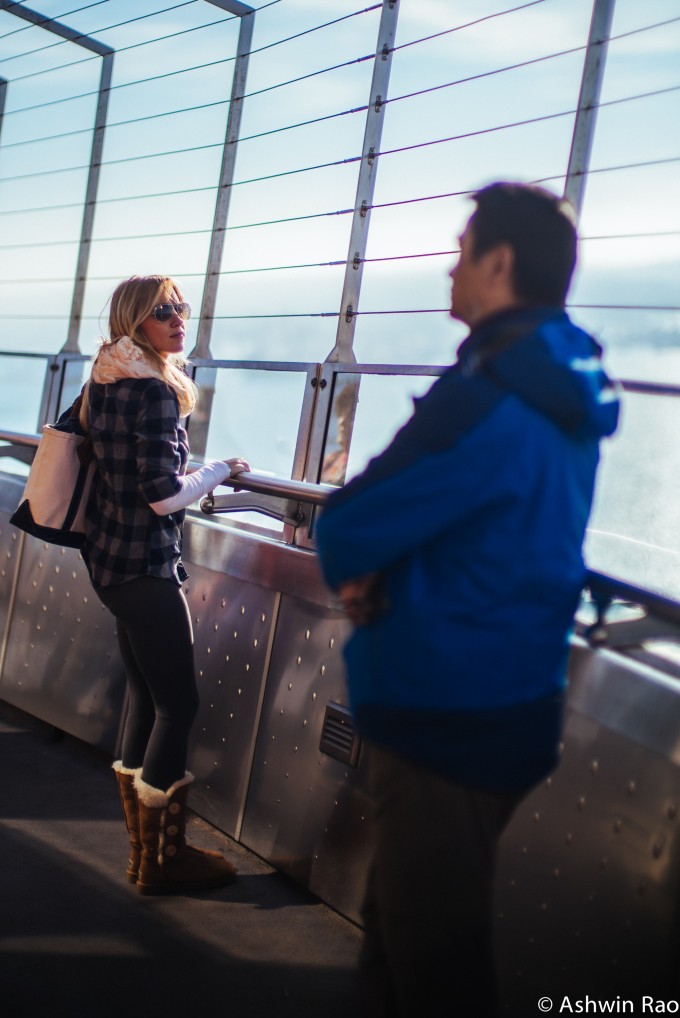

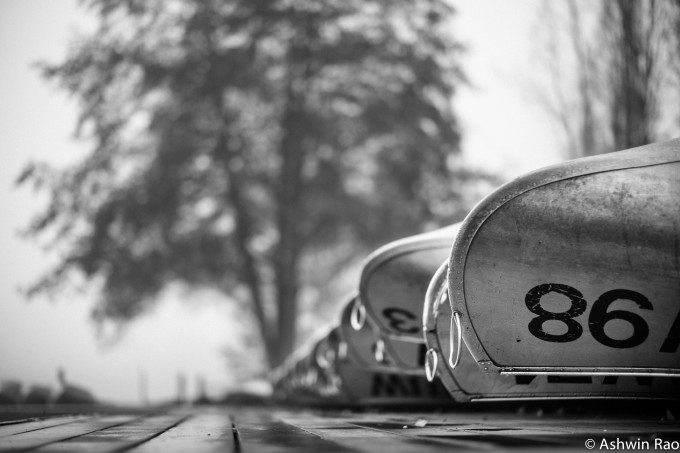
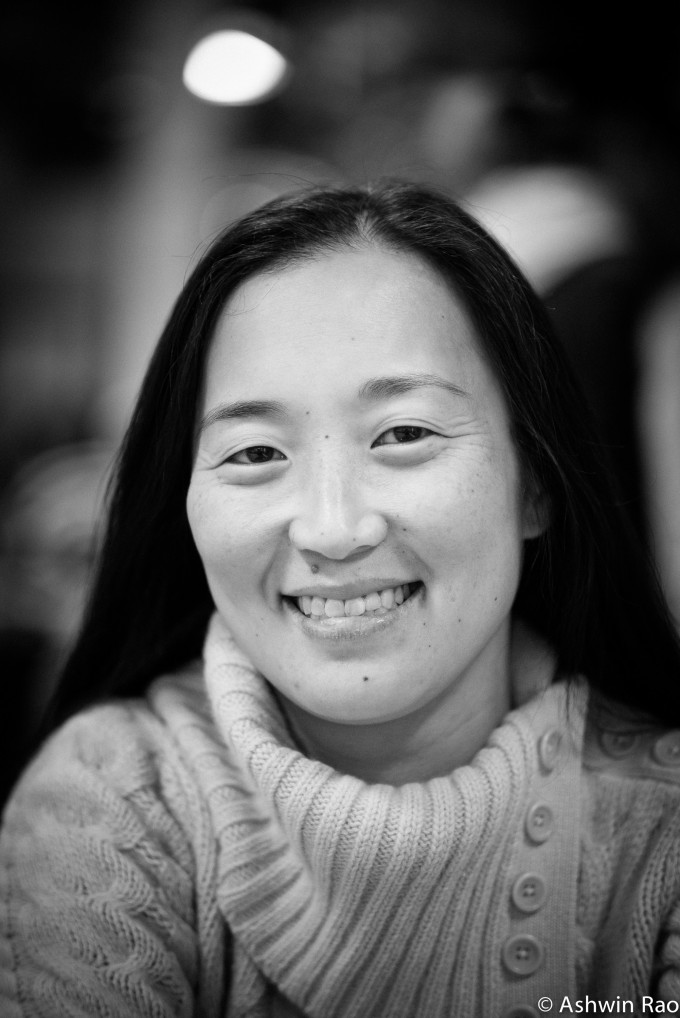
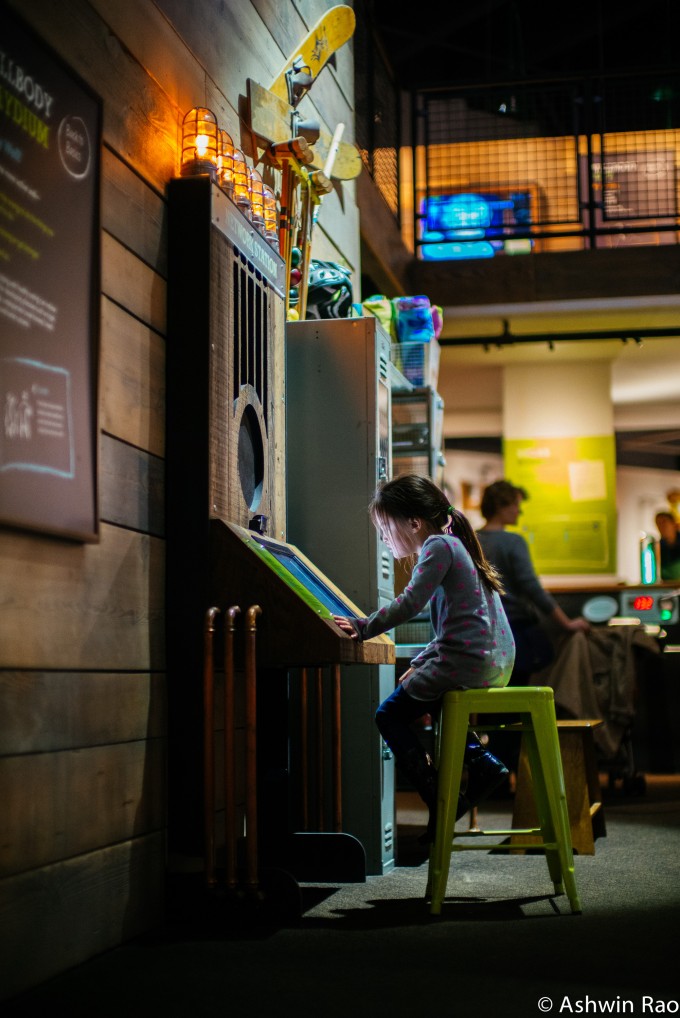
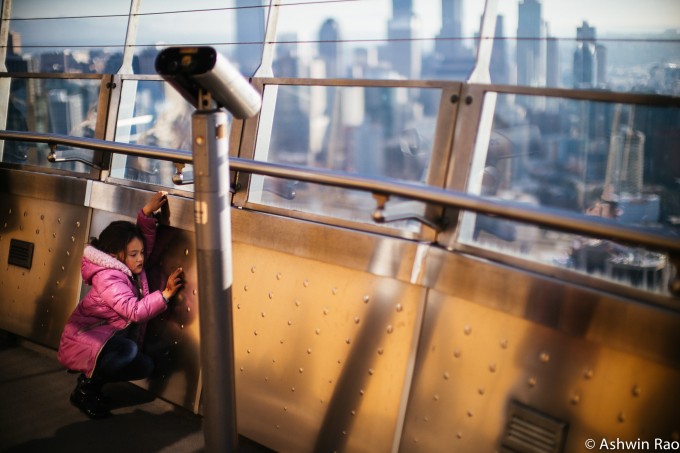
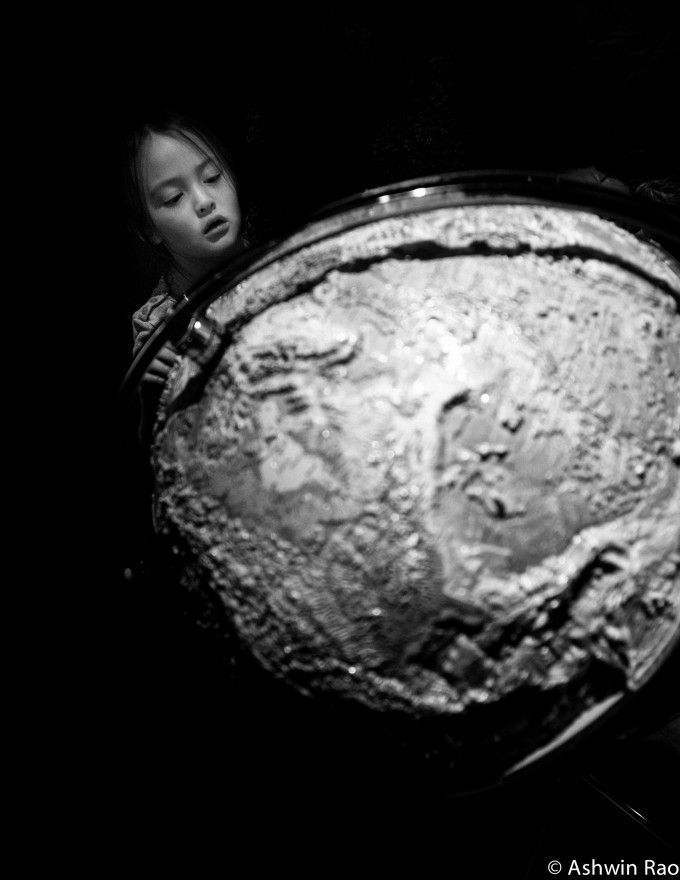

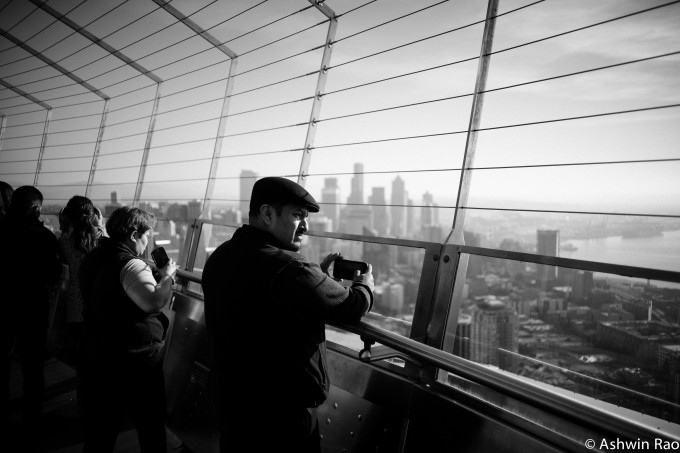


Hi Ashwin, great post and a good read. I am thinking about buying the Sony A7R, along with a NEX\LER Novoflex adapter for my old Leica R lens (28mm, 50mm, 135mm and my beautiful 100mm Elmarit MACRO). Any information about the A7R with R lens? Will this be the R solution that old school Leicaflex owners have been waiting for?
The Sony A7r is a wonderful camera and many classic manual focus lenses are great on it. With all that resolving power and dynamic range packed in such a compact camera, I no longer see the need for APSC or micro four thirds cameras. When I heard of the Sony A7(r), I quickly sold my micro four thirds camera (E-M1) and lenses. Unless you need specific lenses or a big camera body, there’s no need for DSLR cameras anymore either. For many photographers this A7(r), a compact 35mm, 55mm and a 85mm will be all they ever need. There are some issues with shutter vibration, but it’s not as severe as with the Olympus E-M1.
Ashwin, I thought CA matters if don’t do it before a bw conversion.
Thanks for the great review Ashwin.
I must be one of the lucky ones with the A7r.
Went to my local dealer here in Montreal to try the Sony out with all of my Leica lenses not expecting much in the wide end.
However…the 21Lux was amazing wide open with only a hint of vignetting. Likewise with the 35 Asph Lux. Needless to say, the 50 lux, 50 Noctolux, 75cron and 90 all did fantastic.
There must be a ghost in the machine.
Ashwin, thanks for taking the time to produce this unbiased and informative “Steve Huff-style” real world review 🙂 You mentioned the shutter, and shooting @ 1/200th sec. I am used to shooting inside with my M and M9 consistently at 1/60th down to 1/15th handheld (1/15th only as a last-case option) and getting generally acceptable results. When I’m shooting architecture, scenics, or other situations where I want deep depth-of-field, the M’s are on a tripod. In the past when I used my Canon’s for this kind of shooting, I’d lock up the mirror and there’d be virtually no vibration to cause image-degredation. Do you feel the vibration of the A-series would still cause issues when camera is tripod-mounted? IF I were to buy the 7R, I’d still want to at times shoot handheld inside at a slower shutter speed.
Thanks for the write up, Ashwin. And don’t worry- I think the large majority of us understood what you meant by “crop sensor”. We just have a few photography gods on here who like to nitpick about sensor size and terminology. Great coverage of the M lenses on the A7r.
Do you think the A7 is better than the RX1R? For taking pictures of kids, landscapes, portraits?
Well, I would not say better…that lens on the RX1r is so so good and nothing matches it with the A7 just yet. Id go RX1R if you are OK with only a 35mm..cant go wrong with it.
Hi Ashwin,
thanks a lot for your critical review; I think I will stick with my M9-P and the wonderful Leica lenses; maybe these Sony A7s are better for high ISO but who cares, the crispy M9 CCD is it’s own class.
Matthias
Nice article, Ashwin! I’m using my A7r for a few days now, getting acqainted… and leaving me with very few “reading time”. I find it absolutely the camera I have been waiting for the last 5 years. Still, it indeed has some real issues, which you describe very well. But what do we expect? Getting a perfect camera for one third of the price of the M? Important is to work around those issues. And IMO this is really not that difficult to do: stay away from wide angle M glass with outsticking rear lenses (like the Zeiss Biogons – although so far I easily manage to correct the color shifts of my Biogon ZM 28 in PS). But further, I love the looks, the feel, the fabulous ergonomics and above all the second to none IQ.
Thanks, Ashwin. This is a lovely post – as always.
Ashwin,
Very informative review. Thanks for posting it.
I mostly agree with your take on the various cameras mentioned. Unlike you I went ahead and swapped my M9 for an M240. I too have noticed a kind of softening and loss of crispness but when I really enlarge a shot the detail is definitely there so I am not convinced the new CMOS sensor has less resolution. What is really noticeable is improved dynamic range and performance at higher ISO. Shadow detail is remarkable. I have boosted underexposed shadows by 3 stops and gotten nearly noiseless images. The live view is also very nice to work with when framing a shot, especially with a very wide angle like an 18mm. The color cast on the M240 is, as you noted, rather warm but that seems to be hit and miss. I have taken some shots outside that turned out very well. Others requiring desaturating the orange some.
Great review Ashwin it’s always good to get your opinion.
I like yourself couldn’t give up my M9 for the M240 and have come to love the MM over this year.
The M9 has been like a love affair where I almost feel bad about buying the Sony A7R.
I am still anxiously waiting for an adapter so I can try my Leica glass.
Have a great Christmas.
Comprehensive review and stunning images, Great job.
Okay, here we go with lenses:
1. Hummingbird (banner shot): Canon 85 mm f/1.8 LTM
2. SHot #1: Tree and boats, from below: Leica 35 mm f/2.5 Summarit
3. Shot # 2: Foggy water: Leica 50 mm f/1.4 Summilux asph
4. Shot # 3: Kids and liquid nitrogen: Leica 28 mm f/2 Summicron Asph
5. Shot # 4: Boats and dock: Leica 50 mm f/1.4 Summilux asph
6. Shot #5: Tree and dock: Leica 35 mm f/2.5 Summarit stopped down
7. Shot # 6: Kamali looking to the side: Leica 75 mm f/1.4 Summilux
8. Shot # 7: Mark at Glazers camera: Leica 35 mm f/1.4 Summilux ASPH pre FLE
9. Shot # 8: Checking out a new camera: Leica 75 mm f/1.4 Summilux
10. Shot # 9: Atop the space needle, conversation: Leica 50 mm f/0.95 Noctilux asph
11. Shot # 10: Green leaf bokeh: Nikkor S.C. 50 mm f/1.4 LTM
12. Shot # 11: Atop the needle, I was spied out ;): Leica 50 mm f/0.95 Noctilux asph
13. Shot # 12: Kids opening presents: Leica 35 mm f/1.4 Summilux Asph FLE
14. Shot # 13: Boat close up: Leica 50 mm f/1.4 Summilux asph
15. Shot # 14: Hummingbird (banner shot): Canon 85 mm f/1.8 LTM
16. Shot # 15: Passing people: Leica 50 mm f/0.95 Noctilux asph
17. Shot # 16: Silly Face: Canon 100 mm f/2 LTM
18. Shot # 17: Bokeh boat/Tree/BW: Leica 50 mm f/1.4 Summilux asph
19. Shot # 18: Portrait of Jenn: Canon 85 mm f/1.8 LTM
20. SHot # 19: Peering into the screen: Leica 50 mm f/0.95 Noctilux asph
21. Shot # 20: Hiding below: Leica 50 mm f/0.95 Noctilux asph (slight crop)
22. Shot # 21: Hold world in her hands: Leica 28 mm f/2 Summicron Asph
23. Shot # 22: Raise your hands: Leica 35 mm f/1.4 Summilux Asph FLE
24. Shot # 23: Ready to shoot: Leica 28 mm f/2 Summicron Asph
Hope that helps, folks!
Thank you for this Ashwin!
Apparently I have an excellent (and quite expensive) taste in lenses! 🙂
“..Could you please specify which lenses you used for the photo of the little girl on the green stool and the photo of the two men conversing inside the rooftop bar? Simply amazing colors!…”
10. Shot # 9: Atop the space needle, conversation: Leica 50 mm f/0.95 Noctilux asph
20. SHot # 19: Peering into the screen: Leica 50 mm f/0.95 Noctilux asph
Thanks Ashwin!! As always, great photos combined with a well written article. Can’t beat that! Happy holidays my friend!
Thanks so much, Armando! Happy holidays to you and to your family!
Hi, Ashwin. it was an insightful write-up as usual touching upon even the less well-known issues with the mirrorless design.
you mentioned the small exit pupil with small rangefinder lenses, which, dictated by optical physics, results from the small ratio of the diameter of the lens mount throat over the diameter of the imaging circle covering the full 35mm frame and results in the need to bend light at more acute angles to reach the periphery of the frame. Although the Sony E mount, started life as a crop sensor design but called upon later to perform a full-frame job, has a slightly greater ratio compared with the Leica M mount, its advantage is more than eroded by its much shorter flange distance at 18mm in contrast to Leica’s 28mm. All these conspire to have Sony face a gargantuan task in designing wide-angles of compact sizes with acceptable levels of light falloff and colour shift. Micro-lenses in sensor can only bend light so much and Sony would have to rely on firmware-based trickery prior to RAW output to minimise the two aforementioned problems in addition to those tiny little lenses.
Here lies the headache for folks wanting to reviving their legacy glass on sony FE cameras. While Sony’s own lenses can trigger in-camera corrections in a system similar to but more advanced than Leica’s 6-bit, those legacy lenses CANNOT hope to receive a helping hand in correction department.
If Sony’s FE system does not deliver wide-angle nirvana for those legacy lenses, its appeal will rapidly fade. After all, the initial rush to buy the camera has come and dare I say the continued support for the system will come from those who have many legacy rangefinder lenses. Those who are not burdened with such a legacy would be equally happy with any mirror-less APSC or M43 system with its dedicated lenses, not bothered with the additional cost and bulk of a full frame system. Of course one can jump on the Sony FE wagon playing only Sony/Zeiss dedicated line of lenses. But the downside of that tactic is that FE’s flange distance is so short that its dedicated glass would be useless elsewhere. On the enthusiasts’ market, promiscuity of the lenses matter a lot in this day and age when many have multiple systems in their armoury.
This lingering doubt over the long-term viability of the FE system may help explain Sony’s sitting on the fence over its slow-selling also-run SLR line and its mirror-less offering, an indecision in stark contrast to Canon’s courageous severance with its FD past a quarter of a century ago.
Why not make your own LR profiles? They’ll get the job done better than in-camera profiles anyways.
Ashwin. Will you buy the A7r for yourself or stay with the M240. My M240 has problems with a 21mm Zeiss as well it creates a magenta cast on the right side. Not sure if the A7r is worse. The A7 may be a better tool. Remiinds me of the problems I had with the Nex 7 over the Nex 5. Right now no compact full frame seems to be trouble free with wide angle. D!RK
Hi Dirk,
I went with with the A7. I find the files more manageable, and I doubt I’d need 24 mp. Further, detail is plentiful and I have found my “hit rate” higher….
Enjoyed your write up Ash! Nice to see some cool shot of niece and sis! I’m sticking with my m4/3 system, and probably just the EM-5/E-P5 set-up for now. I’m intrigued by the FF look especially after shooting your M Monochrom, but I like my stable of lenses, and don’t own any M glass.
I’m very interested to see how the a7 line evolves, I hope they integrate the IBIS from Olympus on the next round. That would be a tipping point for me to step-up.
Hell Ashwin,
A really great and useful review compared to the sometimes way to enthusiastic reviews.
I’m also with you in regards to the M9 vs M240. While the M240 has some improvements the end result especially at base ISO doesn’t convince me. It lacks something, it just doesn’t have the CCD magic. The M9 is like Kodachrome.
As for the A7R your result are also similar to mine, esp with M lenses. However on top I don’t like the interface and some controls a re really awkward, esp the front dial is very difficult to use and the shutter noise is too hard and raw. The M9 is not quiet but the sound of the shutter is mechanical and familiar- analog like. Most people I know really love it.
The idea of the A7 is great but we/I have to wait for the next revision. On top Sony always fails when it comes to lenses.
B
Great article Ashwin!
Just one question (or situation):
Richard Branson has just invited you to quickly pack some things and join him and a few celebrity friends on his private island estate in the BVI for a weekend of sheer indulgence.
Your lovely M9 and MM, alas, are in the shop for re-alignment. You see the A7r and the RX1r sitting side by side on your credenza.
Which one do you grab?
Lovely question! I’m not Ashwin, but I’d likely forego any cameras and just enjoy the “sheer indulgence.” That’s of course, only if I was single!
Yes, it will be a few more days before the 7r arrives. But that is not the sole issue with Sony. Only two full frame lenses are or will be available, supposedly, and with a wait for the 70-200 zoom. That’s somewhat like buying an 8 cyl. car, but you have to wait for the last 2. As moderately revolutionary as these cameras are they should have been better supported. But photography as never been Sony’s prime concern or major money maker.
It’s an insult that they have marketed these cameras so inefficiently.
The M9 used offset microlenses on the sensor whereas the Type 240 uses shallow photosites on the sensor. So Leica is ahead of the game here. Not bad for the old fox.
Well that’s a lot of comments! A very good review, and IMHO a more interesting read than Steve’s which, by necessity, was somewhat more dry than yours. I’m a happy A7R user with Leica R lenses so have already pushed my money out of the bank, but it’s still really interesting to read others viewpoints on this lovely little camera.
Honest and well balanced write-up and an amazing set of images.
Thank you to share it Ashwin
Sadly there are technical references missing. What lens did you use for which shot and at which aperture? Thank you
Ashwin, Steve
Do you know if the A7/A7R are compatible with the Leica 50mm summicron with close focussing/ dual range?
Ashwin
Great write up. Your experience almost exactly echo’s mine with regards to sticking with the M9 and Monochrom and to when you ordered your A7R. I am being told by my dealer that the R may be another week, but he has A7 bodies. Itching to get my hands on the A7R and stick my underused WATE on it.
Looks like Sophie is going to be your Brandon. That’s great because she makes some great faces.
Has anyone heard any accurate info on the A7 shutter life? This itself could very well be a deal breaker. I have seem on a couple of boards(and am guessing not accurate) of 60,000 actuations.
They said the A7 has longer (double) shutter life because of the electronic front shutter. A7R does not so it should wear down quicker.
Shutter life as well as battery life are major factors, albeit personal, in decision. with the DF getting 1,400 shots per charge and roughly 150,000 shuter actuations that becomes a factor, but the price of the DF is ridiculuous. the A7 with battery pack/grip sounds more like a raesonable setup.
Is it worth buying?
The question is more difficult one might think, since the majority of potential buyers already have some kind of camera, or even a system with multiple lenses.
A7(r) and the new FE primes get rave reviews on image quality and high ISO performance, even compared to full-frame DSLRs. But the next DSLR generation likely catches-up. I would not dump an entire system based on this week’s performance on test charts. Heck, even the next generation of APS-C NEX may catch up.
A7 (and NEX) are not fast to wake up, to autofocus and even autofocus unreliably in bad light. That could be a deal-breaker for spoiled DSLR users. On the other hand you do not lose much when adapting third-party lenses rather than buying the Sony (Zeiss) FE lenses.
Owners of “classic” Leica M lusting for the digital workflow were, and still are, in a painful struggle. Buy hideously expensive and quirky digital M bodies with short product lifecycles that become technically obsolete and un-repairable as quick as the oriental competition. Or abandon the entire rangefinder concept with a cherished inventory of lenses. The A7 offers a lower cost alternative, at least for some of these lenses and with quirks remaining.
Owners of glass from “classic”, but abandoned systems (Leica R, Minolta SR, Canon FD etc.), or those lusting after the cheap second-hand offerings, even for lenses with exotic specifications, feel tempted to buy an A7. But will they really use these lenses? Owners of DSLR systems lose their existing inventory of lenses, or at least the AF functionality when adapting to the A7. At least new FE lenses will be more expensive. But now they know which lenses they actually need and use. They do not have to buy all new for the A7. And for some the FE 35 and/or the FE 50 will be all they ever need.
The A7 is more compact than all full-frame and even APS-C DSLRS, even smaller than Leica M and many “classic” SLRs for film. Retro-focus super-wide lenses, long tele lenses, fast tele lenses any fast, tele or travel travel zoom lens will spoil the compactness of the body.
This is a very down to earth summary of the situation with the Sony A7/A7R. Despite all the efforts put in the various reviews i am unsure about the following important things.
I have not seen any shuttershock tests and badly suffered from that with my E M1 (returned)
With regard to AF speed i see a lot of conflicting statements, can anybody be more specific ?
I like to use Leica M lenses on the A7/A7R but some are saying that the 50 mm Lux can be used without issues and Ashwin reports on this is more cautious. We are in the early stage of the review cycle and no doubt this will be clarified over time. For the time being i wait before i use my credit card. The review of Ashwin looks to be quite balanced and compliments the review of Steve.
A combination of enthusiasm versus realism.
Looking very good Ashwin.
I’m not trying to incite a format war here (really) but the A7 has taken us another big step back to the future. As someone who grew up shooting 35mm film and then larger formats, it is exciting that the industry is producing cameras like this. Kirk Tuck has a brilliant post this week about the artistry and use of larger formats as tools for different looks. Photographers have known and understood for decades FOV and perspective associated with different film formats.
The way a 100mm MF lens renders a scene compared to, at the same distance from subject, a 50mm on “full frame” vs a 35mm on APS-C vs a 25mm on m4/3 is completely different. Larger formats give unique perspective due to their longer focal lengths. Shallow DOF and flattened perspective are the result and you simply cannot get the large format look with a small sensor.
I’m not criticizing small formats – not one bit – but I am tired of hearing that they are no different than larger formats. You can try and equalize the DOF by producing a faster lens on small format sensors but you cannot change the physics of FOV. A 25mm lens will never render the scene the same way a 100mm lens would on medium format.
We have come to defin Image Quality in terms that do not take into consideration these concerns. Resolution/detail, high ISO performance and dynamic range are critical components but do not complete the picture.
+1
Hi Ashwin,
Nice review. The SONY seems an interesting proposition for someone like me who is invested in a Leica ME but the upgrade to the M-240 seems too steep. For street photography, in which I am interested, accurate focusing is usually not a big deal. Most of the stuff is done using zone focusing. In that angle the SONY seems to be a winner.
The colors from this camera seem to be gorgeous! Leica has got a real fight at its hand. Can’t wait for its reaction.
Mohan
Hi Ashwin,
Amazing review. Thank you for all of the thought and effort that went into it.
One question: Did you test the camera at lower shutter speeds to see if the shutter causes blur? I understand you were uncomfortable with the sensation, but I do wonder what the pics would look like. Thanks.
m
Thank you, Ashwin. I really enjoyed your write-up and also the images
that you shared! Nice to know the Leica 35mm f/1.4 Summilux Asph
does well on the A7R, I was hoping it would! How do you like it’s
Bokeh on the A7R’s sensor?
Given Steve’s results with his Sonnar 1.5, I’m looking forward to shooting
with my Jupiter 3 (Sonnar clone).
Question: do you know if anyone’s tried the Leica 50 Summitar on the
Sony A7R? I’m wondering if it can be safely collapsed on the A7R body
when using a Novoflex adapter? I accidentally collapsed mine several
times on the Leica M9 but thankfully there was enough clearance where
it was a non-issue.
I guess the search continues for that perfect non Leica camera that perfectly fits Leica lenses.
Yes that’s what I was thinking exactly. Many cameras are great already in the 35mm to portrait are 75mm range..macmatt78@hotmail.com
Interesting review Ashwin!
One point on the M9: You state that the M9 is crippled beyond ISO 800. While that is true if you increase ISO in-camera, you can use the technique of “Shooting at ISO 640 and pushing in LR5.” Using this technique, I find the the M9 to be quite a good camera for high-ISO night photography, particularly considering its color rendition. Have you see the following LUF thread on this technique, which I though might interests you if you haven’t seen it?
http://www.l-camera-forum.com/leica-forum/leica-m9-forum/292708-m9-colors-night-best-way-shoot.html
It’s a long thread. In post #101 (I think that’t the number), I list the steps in shooting and processing using this technique.
—Mitch/Chiang Mai
Hi Ashwin, thanks for the review, amazing images. One request though….can you please label each image with the lens you used!? I particularly like the color tone of a few of those and am in search of the right lens to pair with the camera.
Again, great work!
+1 Please, I’m dying to know which brushes you used to paint these beautiful pictures.
Thanks for the write up Ashwin. Good stuff as usual 🙂
Thank you kindly 🙂
Wow, some gear you’ve got there bruv! Cost a few bob I bet!
Leica 35 mm f/2.5 Summarit
Leica 35 mm f/1.4 Summilux Asph and FLE
Leica 50 mm f/1.4 Summilux Asph
Leica 75 mm f/1.4 Summilux
Leica 90 mm f/2 APO Summicron Asph
Canon 85 mm f/1.8 LTM
Canon 100 mm f/2 LTN
W-Nikkor 35 mm f/1.8 LTM
Nikkor S.C. 50 mm f/1.4 LTM
Nikkor H.C. 85 mm f/2 LTM
Canon 50 mm f/1.5 LTM
Zeiss ZM 50 mm f/1.5 C-Sonnar
One of the best reviews I have seen in a long time, I use a 35m lens as a standard 85% of the time so changing lens is not an issue how does this compare to the rx1, as a choice to purchase I do not like the style of this camera and using a viewfinder attached is no problem I do it all the time with a Leica x1 as a back up to my m9 Thanks again for the great review
Thanks, Jim!
Hey Ashwin,
Excellent write up and lovely images as always.
I have had the camera over a week now but I doubt I’ve used it anywhere near as much as you, that said I can relate to almost everything you’ve written, even retaining the MM and M9 as my main cameras.
I’m yet to actually process any of the files as I’m supposed to be on vacation….so I’ve not had that experience yet.
I’ve found a couple of frustrations with the camera, primarily around focusing wide open. In many ways it’s reminded me why I opted for the simple ergonomics of my Leica M’s. I don’t see the A7r as being ergonomically flawed, more that I need to adapt to it.
What I absolutely love about the camera are the JPEG’s, they are beautiful and Sony have certainly done an excellent job in this regard.
I couldn’t possibly give a definitive opinion yet but I’d also be a cautious “yes” so far!! I have the 35mm f/2.8 FE arriving in the next few days and I’m really looking forward to giving the autofocus a go.
All the best, Jason.
Jason, always great to have your thoughts. The A7 and A7R have great JPEG’s for sure, and I am tempted by the 35 FE lens…I haven’t gone there yet, but may soon…though the 55 is a definite for me…
Beautiful shots Ashwin!
Thanks. I really enjoyed your work and thoughts, and it helped me in my decision making!
Having to raise the ISO to get a fast enough shutter to prevent the shutter shock might be ok in terms of noise, but it’s got to affect the dynamic range a little. The A7 continues to sound like the better deal.
Oh and hopefully they get the Sony Lens Compensation App compatible with the A7 and A7r soon. Fuji do it in camera with their X-M adaptor, and now I learned from this review that Leica also do it. Thanks Ashwin.
Ashwin, thanks for this report. I have a 35mm Summilux Asph pre-fle and am tempted by the A7(R). Any specific issues you noted when using this lens? Thank you.
Wow, not sure what to make of the bokeh on any of the flower images.
Great addition to Steve’s preview and review Ashwin and having picked up an A7r myself last Friday I would concur with pretty much everything you said. I was keen to see how it compared to my M240 with my WATE, 35 cron and Nocti so I set up a test yesterday and have posted the results along with some 100% comparison crops here
http://www.flickr.com/photos/52089382@N02/collections/72157638260919743/
As you’ll see it’s a bit of a mixed bag, both for the M and the A7, however I was really surprised how well the WATE seems to work – against all the odds from what many have said.
Slomo, this is a very interesting observation!
Converters do count, for example I find LR much better than Apple Aperture for B&W.
With Apple I get blotchy noise artifacts whereas nothing with LR. (Using my Leica)
Ashwin,
Great review. I was curious more about the detail smearing as Cornerfix can probably take care of color shifting at the edges. How bad is the smearing, as this can’t be corrected, and how far into the photo do you see it and how much do you need to “crop” it out? I assume this is mainly only on the wider lenses, and not 35 and longer?
Thanks!
To my eyes, the smearing was quite objectionable on the 21 mm lens, but not so bad on other lenses. I have occasionally seen bad results with the 28 cron, but in my time with it, it was fine….
It’ll be a good camera system option in a year or two when there are more native lenses to choose from. Or wait until Photokina 2014 when more choices will arrive from other manufacturers. Or wait until Photokina 2016 when even better stuff will be announced. 🙂 The progression of digital technology means that everything now is like a short lived throwaway product (like any computer product.) Only until we hit some kind of technological plateau and standstill will we be out of this camera consumption madness. 🙂
Although we have really already hit that point in respect to resolution; images are now beginning to look like technical illustrations instead of photographs due to their perfection of cloning the world. We already have what we need in respect to being able to make excellent images, no reason to keep looking for some holy grail. We really should be concentrating on improved image content and context instead 🙂
The holy grail is the nostalgia of using all those old lenses that have gathered dust sitting in the corner of the cupboard. People don’t want lenses made for these cameras. (-; Actually the holy grail is having a $2000 M240.
Of course not. Co. The. The riff racf and the great unwashed will all be walking around with M 240’s dangling crom their necks. An unpleasant state of affairs methinks.
I deeply apologize for all the iPhone generated typo’s…
Also… Ashwin, interesting observation about the shutter vibrations. That maybe why Steve had some issues getting sharp images with his model shoot. He did better with the A7
To back up my opinion above that m4/3 IQ isn’t much different than this Sony’s full-frame, check out this image taken with the Oly OM-D EM-5 and the humble Panny 20/1.7. Click on the image itself to pixel peep. Amazing resolution, no? Less is more.
http://3.static.img-dpreview.com/files/p/E~forums%2F52069869%2Fec1f70c67b054d9abc44524756bc7f9d
You know, I took a shot with my E-M1 and 17 1.8, the A7 and 35 2.8, the M 240 and 35 f/2 and NIkon Df with the 50 1.8. The sharpest and best looking file was from my E-M1. No joke.
Nikon Df review on the way Steve?
Thanks Steve. Your honest opinion is refreshing and appreciated. J.T.
I would totally believe that…this seems to have become a war of marketing specs rather than viewing actual output – a bit different from the film days were the difference between a 35mm and a 6×6 neg/slide was easily visible…since especially these days most stuff is displayed online rather than prints on a gallery wall…
Hi Steve , thank you for all these reviews, great work ! Though I bought an omd after hearing all the praise for the system, The files really don’t hold up well when the iso increases to 800, even at iso 200 the details in the distance are a mush. Here’s a quick test I did vs the Fuji.
https://db.tt/eNQlBLEv
https://db.tt/WQkr1j0W
I would never go back to the m43
Thanks Ashwin I’ve been getting fab images with the Sony A7r and none of the colour fringing or artifacts.
I was looking at a comparison between the sony raw converter and the Lightroom beta one and LR’s was awful ? Maybe try the sony one and I also was a hold out with the M240 and find the potential of this camera to be much more I still have my m9 and just sold my fuji system to purchase this.i should have listened to Steve about fuji thanks again always enjoy your images and write ups
Wonderful Review. At this stage to me at base ISO the M9 still is the leader only beaten by Medium Format, but full credit to Sony for producing this camera, hopefully Leica will perhaps again look at the CCD sensor as the M240 was a disapointment. Sony May we’ll overtake them with this camera with future releases.
I wonder if you gave the M240 a test. I have had it for several months and still have my M9. In my experience the M240 beats the M9 in all respects. The M9 is no slouch, and I can understand why one would decide to just continue to use it. But don’t kid yourself about the M240. It beats the M9 hands down. After recent firmware changes, the color rendition is dead on accurate. The range finder is much better than the M9. It is extremely flexible and never gets in the way in the respect that the M9 can sometimes do. And there is if anything a sharpness edge in its favor. It mates with the Noctilux in a superior way. Over the weekend I used it with a 20 year old 35 Summicron inside a dim restaurant and was stunned at the detail capture and color rendition. The M9 would have struggled in this setting.
On the other hand, when my M240 was recently in Leica’s hands for the lug replacement I used the M9 for a tour of Civil War sites. The M9 did a fantastic job and the images I made were wonderful. I certainly do not plan to give it up. It is simply clear to me that the M240 is a big step up.
We should all remember that its not the arrow but the person drawing back the bow. You can create great images with either camera.
Thanks for the very honest review.
It pretty much answers the question that it is not a replacement body for a Leica IF you are exclusively using Leica lenses. I was surprised and disappointed to read that you even had issues with the 50mm Lux.
Out of the 8 Leica lenses I have, it seems that 5 won’t work to the standards expected from Leica glass, 2 I don’t know (both old Summicrons – DR and collapsible), and the 90mm Macro Elmar should be good.
1 out of 8 is not what I had hoped for.
Best regards
Huss
Nice review. Thanks.
I have already found ” a modern sensor by which to play with my M lenses, a camera I can take out into the night to make color pictures…….. a worthy second camera to my principal camera, the Monochrom. ” It is called the M240. I no longer use my M9 because the M is better in every way.
The M240 is great, but also 3 times the price of the A7R, and nearly 4 times the price of the A7…gives one a moment to pause…
Great work as usual Ashwin 🙂
Love your posts and pictures.
Dont you think that the 1/8000 shutter speed is partly responsible for the loud shutter?
I have heard that there isn’t any rubber on the lens by the mount, does it seem tight enough for water not to enter?
H
Great question, Henning. It’s possible, as Leica went down on shutter speed max on their M8 to M8.2 and M9 transition to reduce shutter noise….
Great review, Ashin, as usual. These new Sonys look like they’ll have quite a following.
FWIW, one minor thing about color cast and smearing. While it’s the sensor toppings above the micro lenses (IR filter, AA filter, etc.) that cause smearing, it’s the micro lenses that contribute to the color casts…and offset micro lenses, while improving sensor sensitivity and vignetting with symmetrical wide angles, actually make color cast worse! That’s why Leica has to fix color cast in software, and the A7R’s color cast is worse than the A7’s. It’s a trade off. Leica thinned their sensor toppings to avoid smearing, and they use offset micro lenses (or oblong in the m240) to improve vignetting and sensitivity, but heavy color casts still exist, which is (sort of) easy to correct in software.
No apologies necessary. I appreciate you can put up those efforts and share it with us.
Great pictures! Been hitting my head if this camera will save me from spending the big bucks on a leica M. I have a Sony RX1, love the little camera but its like shooting a computer. The image quality is amazing, but when shooting with it i feel like i am using a phone almost…. The D800 which i have as well, to me is more camera like…. Wish i could test these camera before buying, (here in Brazil no luck with that).
So you actually didn’t post any image wider than 35mm? You mention 28 Cron “to work better” – does it work or not? The subject is kind of avoided, seems weird…
What is your question? I posted two shots from the 21 Voigtlander without issues. I posted a couple shots from a Voigtlander 28 in my earlier reports as well as some from the Voigtlander 15. Some 28mm’s may work, some may not. I do not own or have access to every Leica M lens made so not possible.
Ashwin does. And he mentioned using it, but he wasn’t clear and he didn’t post any photo. That’s my question. You seem to be very fragile these days. Relax, you are a happy guy, remember?
To be frank, these images, even enlarged, don’t look any better IQ-wise than Oly’s OM-D EM-5 or EM-1’s. Really! Maybe if one wants to print billboard-sized images, but otherwise … nah. Sure one can pixel peep and see differences in mirco-resolution (and I mean micro) but for normal viewing … nah. With the recent gains in sensor technology, I feel this gotta-have-full-frame mania is hype. Nowadays “less is more,” truly.
agreed – the higher ISO images look kinda crappy – nothing like TriX pushed or even film grain in general – I have seen some amazing test shots at imaging-resource comparing the A7r and D800 and Pentax 645 where the A7r blows away the others but they were using the Otus 55 and not sure on the other cameras…I’ve been scanning negs and slides from 25 yrs ago from my FE2 and Nikkor manual focus lenses on a not great scanner and for these size viewing I’m pretty sure I can make them look better- and I’m no Photoshop wizard…and I’m pretty sure you can get a Nikon Fe(type) body, a few lenses , a scanner, Photoshop CC and a year’s worth of film for less than the A7r with no lens…and what do you know -all those “old” cameras are “Full Frame” – tho in the day they were considered “SMALL” size neg/slides….
Most of what’s out there does great. The EM1 is fantastic. FF gets you a certain DOF and rendering that m4/3 has to struggle to get, but then again, the Oly is definitely no slouch. The other issue is distortion. A 35 mm “portrait lens” on the Oly, for example, would be a wide on this system, with it’s native distortions (i.e. I wouldn’t think of a 35 mm lens as a great portrait lens, due to exagerating features)….it’s subtle but occasionally noticeable…That being said, it’s all about choosing the right options, and this limitation can be overcome with a lens like the 75 mm lens, though you’d have to stand rather far back to get a full head shot…
Very good review and nice pictures. Can you add the lens info to each picture?
Picture #9, #15 and #20 show color shift. Which lenses were used?
I will try to help with this information soon. Apologies for that oversight
To wordy a write up in comparison with the story line. I actually even struggle to find a clear story line in it. I followed pretty much all information one can find on line about the new Sony FF and expected to find some real world user info rather than the same “old news” all over again. So which RF wide angle lenses again do create which challenges again with the A7(r) and which ones are performing just fine?
No worries. My style of writing doesn’t fit everyone. Glad you tried to follow the story arch, and I am sure there will be plenty of information out there to assist in answering your questions.
Great addition to Steve’s review Ashwin. I note you and Steve have mentioned magnified view. Is it just a button press and can this function be assigned to one of the 3 custom button’s ?.
Hi Zakk, yeah, I use the AEL button to bring up magnified view when I feel it is necessary. The A7/R is very customizable, in this regard, so you can assign that function to any number of buttons.
Excellent, thanks Ashwin. My A7 and Zeiss 50mm Planar arrive tomorrow.
great article and shots !!
great snow job Sony – launch an interchangeable lens camera with only one available lens and which has problems with the adaptable lenses everyone wants to use ! and sell loads !! genius – now you can not bother to develop the system ala Nex until you launch yet another system or variant in a years time – mega profit – no wonder nikon slrs continue to sell (no i don’t own one !)
i would suggest that currently only nikon/canon/pentax or panasonic/olympus or leica or hasselblad can be considered to offer a proper camera SYSTEM – sony A7/7r is damned expensive if you can ony use a 35mm f2.8 – perhaps currently a now reduced RX1/1r is a better buy ?!!
I agree that this is a real concern. Sony has had difficulty supporting the NEX system with a broad range of high quality lenses, and I truly hope that they do better with this system. I suspect that they will have several more options of FE primes by next holiday season (for example, a wide 21 mm and a long 85-90 mm lens seem like obvious next choices, beyond zooms). There is already word of Zeiss designing manual focus options for the system, and I suspect that with popularity will come a variety of manufacturers itching to produce lenses for the system….The camera is new, and I am willing to give Sony a chance. They seem to have come ready to play since last year’s introduction of the RX1R, so I hope that there are solutions for those of us ready to jump onboard. Ultimately, color casts can be corrected (for the most part) in software (either onboard the camera or in post), as Leica does this extensively. Detail spearing and the like that have been reported are not generally fixable, so we will see. I, for one, am excited to see where things head, and despite limitations, I will mainly be using my RF lenses on the A7 to see how things go in practice.
Seven times in this writeup you use the expression “crop” or “cropped” (e.g. “crop sensor,” “cropped image plane,” etc.) and I can’t figure out what you are trying to say.
A sensor is the size it is — it isn’t “cropped” from a sensor of a different size. Do you somehow regard the dimensions of 36x24mm as the One True Size from which all other sizes are “cropped”? In that case, is the 40x54mm sensor in a Hasselblad HD4 “anti-cropped” (possibly through the use of anti-matter)?
Time was when photo enthusiasts understood that a 50mm-ish lens (for example) was a tele on your Bolex, a “normal” on your Contax, a moderate wide on your Hasselblad, and a super-wide on your Linhof, and nobody talked about any of those formats as being “crops” of the others.
If you prefer to use lenses designed to cover a certain area on a camera with the same area, fine — just say that. Seems a bit superstitious to me, but who am I to judge?
Yes, I know, it’s just words — but when you’re writing, words are important.
absolutely correct – it drives me mad to hear these cameras referred to as “full frame” (somebody in the marketing department got a big bonus for that one !) – they are, after all, in terms of current hasselblads or past medium format or large format cameras actually “minature” format cameras !!
@ JL and Chris I think most people will realise Ashwin is talking in terms of the 35mm format!!
By cropped sensors, I am referring generally to APS-C size or smaller ( m/43) sensors. I totally understand that the 50 mm focal length would be a wider lens on a medium/Large format rig, normal on a 36×24 mm sensor, and long on anything smaller, but I took for granted that most people reading this would know that. Apologies if it wasn’t clear.
The problem is, those words become dated and eclipsed by the new dialog and technology. It would be wonderful if we were all still shooting (and understanding the optical effects of) larger formats – Kirk Tuck has a brilliant post on this topic – but the reality is, the majority of enthusiasts and even pros are settled on 35mm, APS or even smaller formats so the terminology has been reset. Full Frame has become 35mm and that’s a fact jack. Medium Format is just that and larger formats are a dying breed unfortunately.
I think Ashwin did just fine with both his terminology and his images.
I appreciate all the work you have done Ashwin, and of course that of Steve. I think I’m pretty well versed in the lenses that do work with the A7R, after all we’ve seen a lot do examples. What I’d like to see are the lenses that won’t work, the horror story’s and any ways around them. And that goes for the A7 as well, little has been done to address where the problems of RF lenses arise with that. Your images are terrific Ashwin, I’d just like to see the disasters.
Amazing review, thank you Ashwin!
Could you please specify which lenses you used for the photo of the little girl on the green stool and the photo of the two men conversing inside the rooftop bar? Simply amazing colors!
Thank you from Sweden!
Robin
Thank you, Robin. I will post what lenses were used in a moment. Sorry for that oversight
Another request for color case on the Lux 50 and how prevalent was it? I have ordered one recently for use on the A7r, and can return it if the problems are serious. I have not read any serious problems in this regard previously and it is obviously not an inexpensive lens…..
Thanks for this! Can you possibly post an example of color cast on the Lux 50 ASPH?
Andy, great question. I think Leica would have to work very hard with Sony to get this sensor right. There have been many reports of substantial edge smearing and detail loss at the edges, beyond just the color shift issues which could be fixable by firmware. I think that if Sony and Leica partnered, that could be an interesting proposition, that is, to turn Sony’s considerable sophistication with sensor design and optimize for M lenses. Sony may learn more about this, as the A7/R system forces them to try to design lenses that balance well for the body, and thus encounter some of the challenges presented by M lens designs, which create other problems.
All of that said, I wonder how much of Leica’s current “color rendering” is really a personal choice on Leica’s end to create a “look” to their images. I found M9 and M8 images to have a unique color rendering, that was very pleasing to my eye. Part of the look seemed to be “different” with the M240, which, to my eyes, renders a warmer image tonality. This has been extensively debated, and doesn’t really need to be done so here, but I suspect that the CMOSIS sensor could pump out different colors if Leica wanted to go that way with it. I prefer the color rendering of the Sony sensor (NEVER thought I’d say that). I would say, however, that for the next M body, Leica would be wise to maintain and improve upon pixel clarity and low light performance. Dynamic range appears to be sufficient these days, but files that I played with from my brief tests of the M240 were fraught with banding at ISO3200, when those images were pushed and pulled in post-processing. If they can fix this and have a sensor the pumps out high quality high ISO files, I’ll jump on board.
What is further interesting to me is that I know that many folks are having this debate. The Sony brings compact full frame to the table very respectively, and one has to decide now whether to go for this system or continue on with the more expensive M system, with its RF way of focusing, when now cost is a primary driver of the discussion…..
Now if Sony or some other manufacturer could digitally reproduce the RF focusing patch and mechanism, or some close facsimile of it, then I’d be in….this would be hard to do, possibly impossible, for not being able to see beyond the framelines, but to be able to use a faux parallax version of focus peaking would be so cool. Sony, can you work on this?
Thanks Ashwin. Appreciate the time you have put into the question! I see the M9 and M240 just as different cameras to be honest. If you like the files in one over the other then so be it. For now you can still purchase an ME.
I just feel though that the rendering between the M9 and A7/r are closer (fine tuning and tweaking aside for a7) so would perhaps convert the “unconverted” holding their M9’s. That said it’ll be the last of the CCD’s for 35mm so maybe not.
As you have mentioned, given Leica are the only RF in town it will maintain it’s niche position in the market unless someone comes to the market with a RF. In my opinion this is an enormous risk for any company (including the big guns) to do and I think the status quo will persist. So I think reality we’ll be left waiting for a new sensor (or adjustments in rendering to the existing) if you wanted a different type of M240, closer in looks to the Sony sensors or perhaps even the Nikon D4 sensor.
Theirs a lot to be said for having a brand name (Leica) and a niche product that many photographers enjoying using. If they run their business properly they should be in a strong position. Hence the the a7 is fantastic value in this light, but I can not see the Leica coming back in price in a substantial way.
We’ll have all sorts of FF options though in the next 2 years in a smaller parcel!!
The ME is nowhere to be found (at least in Australia). If you want an ME, be prepared to wait for 6 months. Leica have depleted their current stock of CCD sensors repairing all the cracked M9 sensors (and there have been lots to repair).
Sony don’t need to do anything with the sensor in the A7R. It is close to perfect. It may not work with Leica lenses, but that’s Leica’s problem. Sony should devote their time to developing their Zeiss line.
Thanks Ashwin. Some very nice images in this review and as you mentioned I like the colours it renders. A question; if Leica put this sensor (or the a7 with AA) with some refinement and tweaking in their next M body do you think it would be a buyer of a new M?
I’d tip their would be a fair few make that move who have not yet, based on your brief thoughts in the review above.
I’d only then worry what support would be alive for the MM…..!!!
Sorry…I meant “you” be a buyer….:-)
Ashwin,
Great report and I was eagerly awaiting your test with M lenses. I am primarily a Nikon shooter (and an occasional M6 RF user) and I am almost dreading that this camera will slow me down a lot (B&H has shipped my A7R :-)), and it doesn’t look like the EVF + manual focussing will do that from what I read.
The color cast is troubling, but I have the Summicron 50 (modern version), the 28 Elmarit (IV) and the 90 elmarit (latest version). Do you think these lenses will hold up well ?
Also Adobe has released a color cast plugin called Flat Field (incorrectly named of course) here.
http://labs.adobe.com/technologies/lightroomplugins/
Please let me know if you can get your images to correct itself with these plugins, a LR based workflow (which is my preferred work-flow)
Your images are inspiring. Thanks for sharing.
Wow! Love the filmic post processing on this set Ashwin. I picked up my A7r yesterday from Samy’s in LA and squeezed this video out of it with what little battery charge was in the box. Wanted to test my new eBay Canon FD 17mm f4. Had a 300 FD zoom with me also. To be able to magnify while shooting video and using the EVF is a godsend.
https://vimeo.com/80772962
Congrats, Alan. I think FD lenses will play very well on the camera, due to their design…enjoy, and I will look at the video in a moment!
Very informative review, this kind of real world reports make the site so much fun to read.
One of the advantages of mirrorLess
Rangefinder lenses dont have back focus, front focus, focus shift.
No need to have rangefinder lenses calibrated.
Now all that is needed is for someone to solve the blackout when a photo is taken.
Thank you for a very comprehensive and insightful review. And of course the lovely images that you included with the review.
2nd photo bird on misty river is magical.
Tested the A7 & EM1 today.
If I wanted super fast af, IS, weather sealing, small modern primes EM1 would be it.
However I want a mirrorless for manual focus legacy promes.
Given A7 is same size as EM1 there is no contest for me (& legacy primes).
I also thought I would wait for the rumored non evf, non phase detect, Nex5 body FF.
Yet the EVF on A7 is so nice and framing so quick and accurate that Im not sure anymore.
Bravo Sony.
Still I will tape over the bold Sony logo (as I do with all other digital cameras).
Thanks, DJD! I prefer the EVF, so I am very happy with this….Bravo Sony, agreed!
Nice pictures…. There is a certain “body” to them that I find pleasing (trying hard not to use the word “pop” but there it is)… Looking forward to the arrival of my A7r from B&H tomorrow. But I must say, hearing it described as partially weather resistant is a bit like hearing that your young new wife is partially a virgin….
Hahah, love it! I partially agree ;)…well, no I totally agree. I’d call it weather resistant, but no more than that!
Ashwin great post, though obviously one need to compensate for the “A Rao” paradox, (the fact that Ashwin routinely capture, amazing beautiful warm images with just about anything, short of a diet coke)
Nice post!
So when shooting models with a Sonnar lens on f1.5 till f2.8. Will the focus peaking be usable to focus accurately?
Many thanks!
The sonar will not have any focus shift on the A7 or A7r because you will be shooting with Live View. This lens only has shift on a rangefinder camera.
Thanks for the answer. But I ment more like would it be possible to do full shoots with accurate focus with the A7 & Sonnar? I heard the focus peaking is more of an “aid”. And you have to zoom in past f4.for accurate focus. But that will slow down the workflow or isn’t it necessary?
Thanks
Jesse
You can focus accurately wide open, takes practice, I still use magnification a bit Steve obviously has success without using even that. There is no need to stop down to focus. Enjoy
If you focus wide open then stop down focus shift can surely occur. Just need to adjust for it.
The focus-peaking method is pretty easy, but most of the time it is even easier to enable the hi-quality EVF setting on the camera, and just focus with your own eyes. What makes the focusing without any assistance particularly easy on the EVF as compared to any unassisted OVF, is ironically one of the shortcomings of the EVF: when the camera resizes the images for the EVF, it does not apply any antialiasing method in order not to lose sharpness. But this also means, you can expect some moire effect on diagonal lines. This actually happens, and it is the best means of detecting the focus without littering your scene with peaking color paches. Just focus back and forth till you get some sign of moire on where you want to focus, and once you get it you know that the picture is actually super-sharp at that point (and that is why moire happens!).
Btw, the Sonnar focuses easily even at f/1.5. But it is by no means the perfect lens to mount on a7/a7r. My experience is that the more your focus point moves towards infinity, the more you get smearing on the edges/corners. For me this is visible even at f/8 when the focus is at infinity on a7. I guess people haven’t been talking about this much because they mainly shoot portraits or close-distance shots with Sonnar (it is a people lens). But I don’t think it is a good idea to use it as a general purpose lens on a7.
Excellent write-up. I love the perspective on the body in regards to RF lenses. Love the images. Some crazy bokeh going on in the flower shot. I don’t know if I love it or hate it, but its interesting.